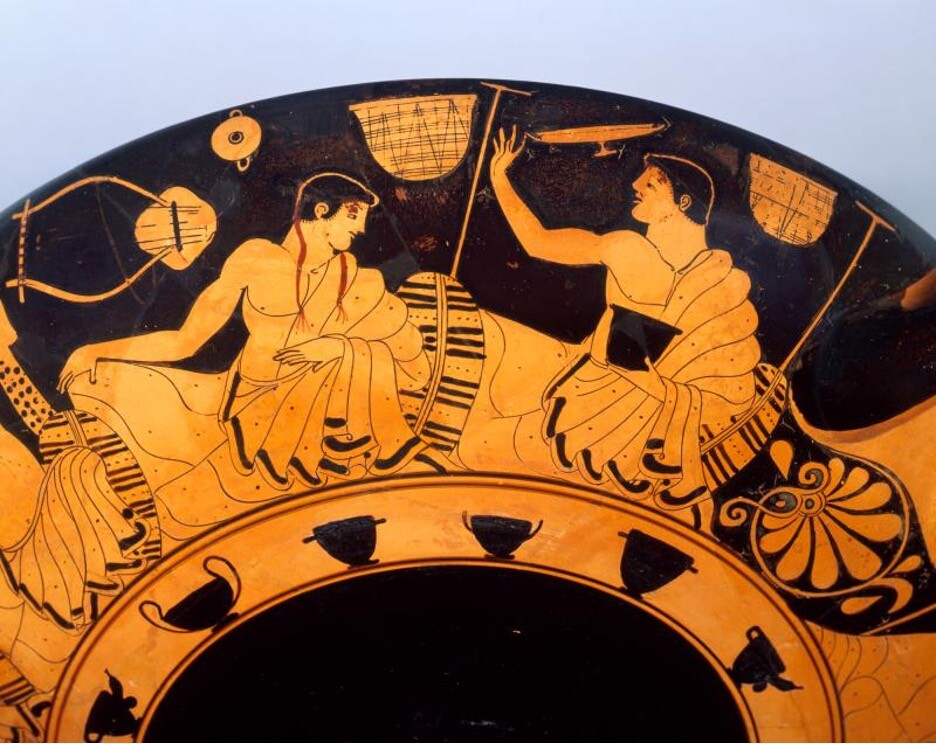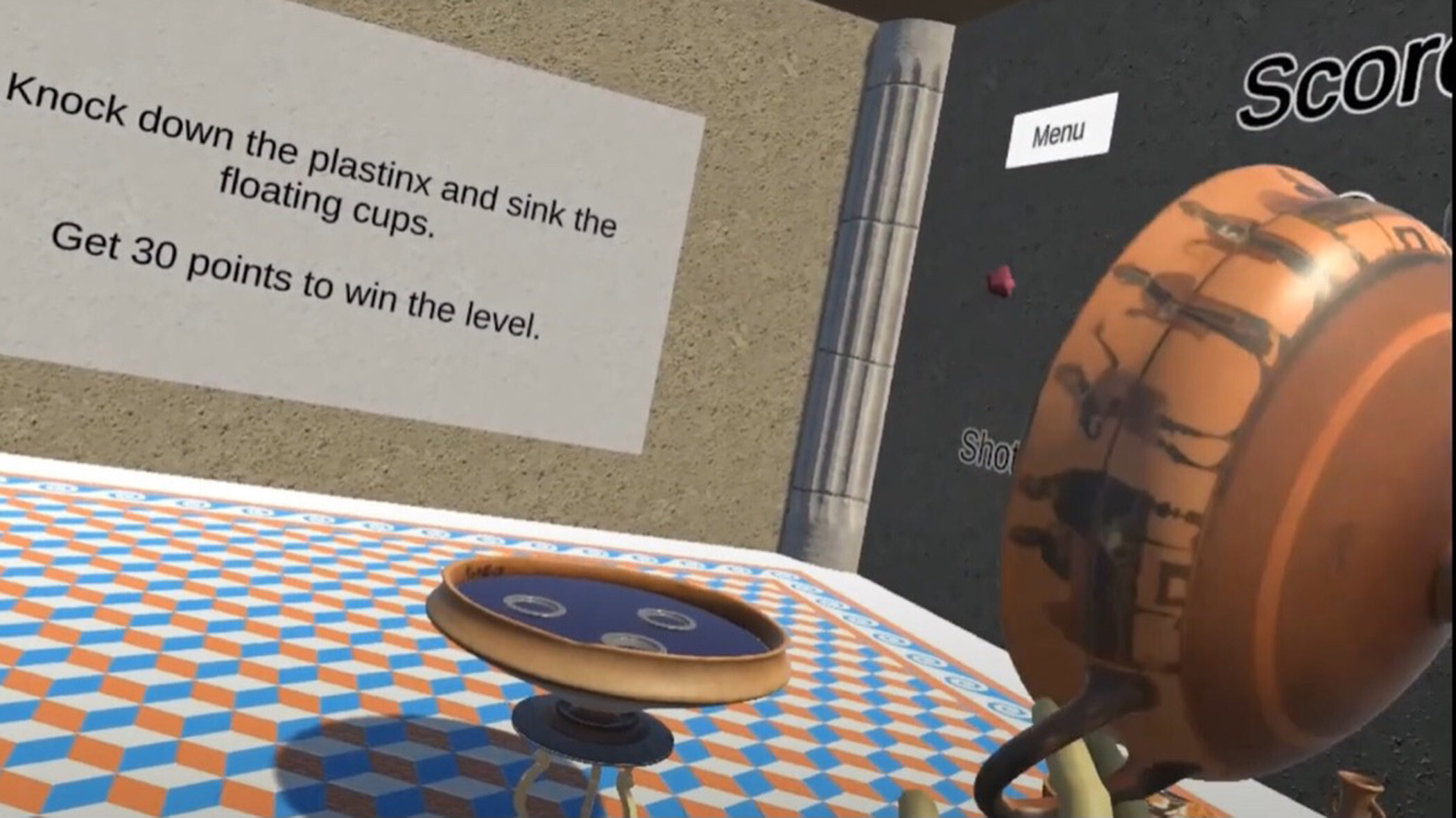The Emory Center for Digital Scholarship (ECDS) enjoyed welcoming students from the National Junior Classics League on July 26th for an immersive VR Classics experience playing VR Kottabos. The 2023 National Junior Classics League Convention took place at Emory from July 23-28, and high school students from around the USA participated in a variety of lectures and activities.
ECDS, along with Dr. Sandra Blakely from Emory Classics, has been partnering with the Kennesaw State University (KSU) Computer Game Design and Development program’s Dr. Joy Li and her class in Educational and Serious Game Design. Through this class, students have worked on the development of educational games in the field of Classics. These games include the Sailing with the Gods game, the Royal Game of Ur, and VR Kottabos. The games are being programmed and designed by KSU student programmers and volunteers to be released freely for future educational use.

VR Kottabos is an immersive experience that replicates the ancient game of Kottabos. Kottabos was a popular ancient Greek party game, which required men to display their skill and aim at the symposium. While reclining on couches, men would drink from kylikes (a kylix is a Greek cup). The men would take the dregs in their cup and try to hit targets. In the image above you can see a kottabos stand (left) and a lekane (right), both common targets for the game.
The Carlos Museum collection contains a beautiful kylix depicting a detailed a Symposium Scene with people playing kottabos.

On July 26th, ECDS invited students from the National Junior Classics League to come and beta test VR Kottabos in the ECDS offices in Emory’s Woodruff Library. Over 50 high school students came, having the chance to try the game on an HTC Vive headset. The students provided helpful feedback for the KSU programmers, who were also in attendance. Programmers Donovan Lott, KSU alumni and independent programmer, and Aiden Gohlke, KSU Computer Game Design and Development student, assisted the students and took notes.

Thanks to the students for their participation, to Steve Bransford and Robin Horton for support of the HTC Vive headsets, and to Diana Duarte Salinas for directing students.
Look out for VR Kottabos to launch on the ECDS Steam page, free, later this year!
*Model Sources:
Malibu painter, scanned by: 4Dresearchlab. Creation 575-550 BCE. Scanned 2019. “Drinkschaal (kylix/Sianaschaal); symposium scène.” Athens (Greece), inv. APM13802. CC-BY.
Lekane with Lid. Museo Archeologico di Aidone, Aidone, Sicily, Italy. Catalogue Number: 61-704 / EN10575. Citation: The data for this project were originally collected as a joint effort between the University of Catania and CVAST at the University of South Florida (USF), with the collaboration of the Fondazione Bruno Kessler (FBK). Dr. Mariarita Sgarlata and Dr. Herbert Maschner, Principal Investigators. We gratefully acknowledge the participation of the administrators of the Villa Romana del Casale and the Museo Archeologico di Aidone. The data have been transferred to Global Digital Heritage (GDH) for processing and analysis. Funding for this project, both at USF and at GDH, has been provided by the Hitz Foundation, Herbert Maschner, Principal Investigator – CC-BY-NC.
AMJ3D. 2020. Lion keychain 3D Print. CC-BY. (Adapted by student programmer and modeler Hakeem Thomas into the table leg, 2021)
Hakeem Thomas. 2021. Oxybapha. CC-BY-NC.
Kottabos Element of a Dancing Satyr (470-450 BC). Italy, Etruscan, 5th century. Bronze. Overall: 15 cm (5 7/8 in.). Purchase from the J. H. Wade Fund 1974.16. CC-0 Public Domain.
